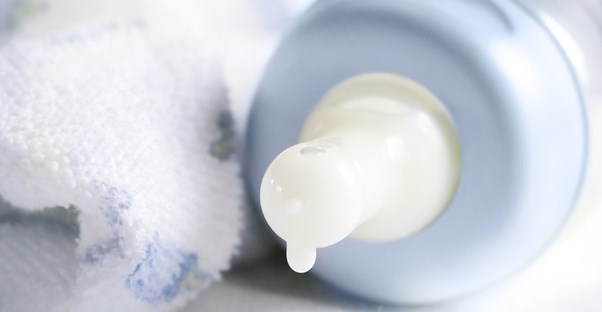Cleft lip and cleft palate are closely related conditions that occur as a result of the developing facial structures in an unborn baby not closing completely. They appear as gaps or splits in the upper lip, the roof of the mouth, or both.
Children who are born with cleft lip often have trouble drinking from a bottle before they have received the corrective surgery required to repair both cleft lip and cleft palate. There are things you can do, including the method used for feeding your baby, as well as using special bottles. Depending on the type and severity of the cleft, the method and bottle that is needed will vary.
Breastfeeding
If your baby has only a cleft lip but no cleft palate, breastfeeding is still possible. However, sometimes the feeding position has to be altered to achieve the best suction. An infant who has cleft palate, on the other hand, can be very challenging to breast feed. If breastfeeding is possible at all, it is best to only breastfeed for 10-minute sessions if your child has a cleft palate.
Supplemental bottles may also be needed if the breastfeeding alone is unable to supply enough food for adequate nutrients. Mothers with newborns who have cleft lip or palate should meet with a lactation consultant to discuss things like the correct positioning for your baby, as well as how often to feed, how long, and pumping techniques for excess breast milk.
Bottle Feeding
Most cases of cleft palate will completely prevent a child from being able to produce enough suction to draw formula or breast milk from a bottle. Fortunately, there are specially designed bottle systems, nipples, and flow valves created for infants with cleft palate and cleft lip. These products increase the comfort and effectiveness of feeding babies with this condition. However, there are some things that you can do to help while feeding as well.
For example, small, frequent feedings are good for infants with clefts during the first few weeks. It will probably take your child longer to learn how to eat, and they will probably take longer to eat once they learn. Frequent feeding sessions of about 30 minutes are ideal for an infant with cleft palate.
While feeding, it can be beneficial to hold your baby in a semi-upright seated position. This is to limit the amount of fluid that is able to enter the nasal passage. If liquid gets into the nose or if the baby begins to spit up, tilt the baby forward. The child will then be able to swallow any extra milk in the back of the throat and the extra milk in the mouth and nose will drain out. Sometimes, using a bulb suction can help if this happens as well.
Since the infant will be unable to suck on the nipple by themselves, the bottles that are designed for cleft palate babies usually involve self-compression for the milk to flow out of the bottle. Therefore, you have to be careful about how much liquid is in the child’s mouth at once. If you see any signs of distress from the child, such as the head pulling back, no breath for three to four seconds, coughing, or an alarmed expression, remove the nipple from his or her mouth. There are many products that have been designed for cleft palate babies. Some examples include:
- Dr. Brown’s Bottle
- Pigeon Cleft Palate Nipple
- Haberman Feeder
- Enfamil Cleft Palate Nurser
Most of these products work by using nipples with larger slits, squeezable bottles, or both. Deciding which is best for your child will depend on the location and severity of the cleft.




